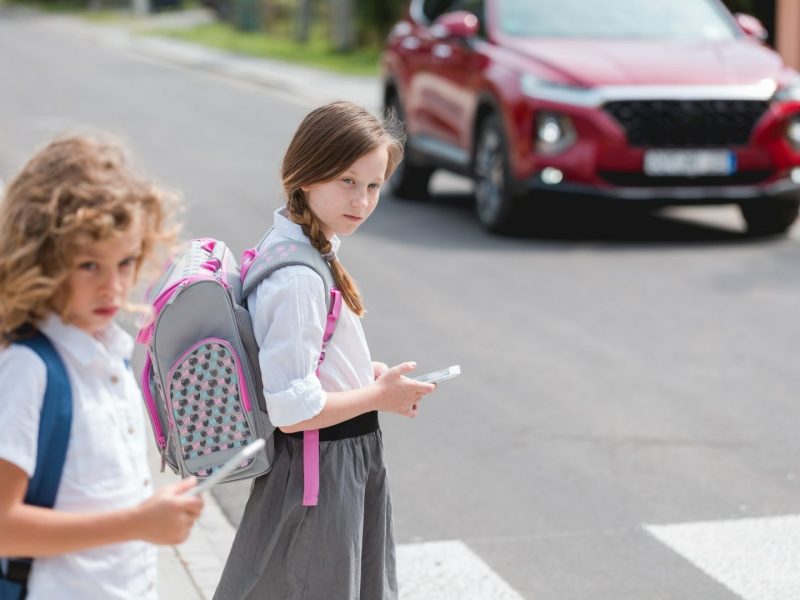This Information Sheet provides information concerning the liability of a school (or school authority) in negligence, in circumstances where a student suffers personal injury, loss and damage.
We discuss the compensation options available to students (and their families) when students suffer physical and/or mental harm on school grounds, or otherwise in connection with their education.
If you or someone you know have suffered a personal injury at school, or in connection with schooling, due to the school’s failure to provide reasonable care and supervision, it is essential to understand your potential legal remedies.
It is also very important to act promptly, as there are time limits which apply to actions in negligence.
Has the school been negligent at law?
In order to establish a claim in negligence against a school, the person(s) bringing the claim (‘the plaintiff’) must be able to prove the following four elements based on the particular facts of the case:
Duty of care
The existence of a duty of care owed by the school (the “defendant”) to the student/family bringing the claim (the “plaintiff”).
A school and its employees’ duty of care to students is uncontroversial and falls within a category of situations whereby a duty of care has long been recognised at law.
In fact, this particular duty of care is classified as a “non-delegable” duty of care. This means that a school cannot discharge its duty of care to a student by simply placing a responsible third party in charge, or delegating care and supervision of a student to someone else (e.g. a teacher, staff-member, Parents and Citizens Association, or another third-party).
Breach of duty of care
Acts and/or omissions by the school (including teachers/staff) which amount to breach(es) of the duty of care owed to the student.
There are many situations in which a school may be found to have breached its duty of care to a student. A court will find that there has been a breach of duty if an injured student can demonstrate the following (in accordance with the Civil Liability Act 2002):
a. The risk of the particular harm suffered was reasonably foreseeable;
b. There were precautions which could reasonably have been taken by the school to significantly reduce or completely remove that risk of harm;
c. Taking precautions against the risk was reasonable because the risk of the particular harm being suffered by a student was not insignificant, taking into account the facts of the matter (e.g. the risk was not farfetched or fanciful); and
d. It is reasonable in the circumstances to require the school to have taken precautions, having regard to:
i. The probability that the harm would occur;
ii. The burden of taking the precautions;
iii. The seriousness of the harm; and
iv. The burden of taking precautions to prevent similar, or other, harm.
The following are just some examples of a breach of duty of care by a school to a school pupil:
• A 15-year-old boy injured while swinging on a flagpole in the playground, before school.
• An eight-year-old girl injured while playing softball with friends in the playground, before school.
• A 12-year-old boy injured by sticks and stones thrown by students of a nearby high school while waiting for a bus (at a bus-stop one-and-a-half blocks away from the negligent school).
• An 11-year-old girl with special needs injured by falling six metres from the roof of a school building.
• Multiple students suffering harm due to teachers leaving out ‘dangerous equipment’ such as baseball bats and trampolines.
• Students suffering harm because teachers failed to prevent a fight between students, despite the fight being foreshadowed by students in a message written on a blackboard.
• A year 8 student suffering harm in a woodworking class because the relief teacher had no experience in woodworking.
• A student suffering catastrophic injury playing rugby for the school whereby warnings had been made in respect of players with “long, thin necks”.
• A 14-year-old boy injured when he stepped in a pothole playing touch-football on the school oval.
• A nine-year-old boy who fell from a second-floor balustrade, before school.
The scope of a school’s duty of care to its students is broad and extends beyond the physical confines of the school’s grounds and facilities – and beyond the school’s ordinary operating hours.
Schools have also been held liable for breaches of duty of care to students attending off-site excursions and extra-curricular activities; as well as in relation to psychiatric injuries caused by bullying at school, outside ordinary school-hours (including weekends) – and even online bullying (cyberbullying).
Causation
An injured student is required to prove that it was more likely than not that the acts and omissions of the negligent school caused their injury, loss and damage. The negligence of the offending school does not have to be the only cause, but needs to be a “material” or contributing cause.
In other words, it is necessary to show that, had reasonable care and supervision been provided by the school and/or reasonable precautions been taken, the injured student would probably not have suffered the injury, loss and damage claimed.
The element of causation is a complex legal issue and is often the subject of expert evidence and robust legal argument.
Damage
It is necessary for injured students to provide evidence as to the nature and extent of their injuries, disabilities, loss and damage. The damage must be significant (or more than insignificant) to warrant the commencement of legal proceedings. For example, in terms of claims for psychological harm, the plaintiff must be diagnosed by an independent expert as suffering a recognised psychiatric illness before they are permitted to claim damages flowing from psychological and emotional trauma.
Typically, if a person claims damages for personal injuries that they have received as a result of negligence, they could seek compensation for any losses caused by the injuries, including the loss of income or income earning capacity, the care they require and are provided either commercially or by their loved ones, and for the pain and suffering that they have suffered.
What can students and families affected by a school’s negligence do?
Persons affected by school negligence have a number of options for redress:
Internal review and compensation
Firstly, students and families can liaise directly with schools and school authorities, to obtain nominal compensation and support for injuries and disabilities which are incurred arguably as a consequence of a school’s negligence. If you wish to read more about “unlitigated” claims, please visit the following web-page published by the NSW Department of Education: https://education.nsw.gov.au/about-us/rights-and-accountability/legal-issues-bulletins/bulletin-39-preparation-and-use-of-accident-reports-in-school
Court Proceedings for Damages
Secondly, students and their families can make a claim in negligence in circumstances where a school failed to take reasonable precautions against a reasonably foreseeable risk of injury which then materialised causing harm.
What are the steps in making a claim against a school?
Contact Us
We can speak with you either in person, by audio visual means, or by telephone, by way of a free initial consultation, in order to understand the circumstances of your potential claim. We will talk to you about your case and advise initially whether we think the case is worth your while to investigate.
Obtain Your Clinical Notes
If we agree that your case has prospects of succeeding, we will request your relevant clinical records. Once we have reviewed those records thoroughly, we will advise you whether we think there is a merit in pursuing a claim.
Court Proceedings
Once we have the supporting documents and evidence necessary to commence court proceedings, we can do so on your behalf and act for you in those proceedings until the case is resolved.
Are there time limits in making a claim against a school or school authority?
Yes, generally three (3) years from the date on which a personal injury becomes discoverable, and not more than twelve (12) years after the offending took place.
It is therefore important to speak with a solicitor as soon as possible if you think you have a claim.
If you or someone you know have suffered a personal injury at school, or in connection with schooling, due to the school’s failure to provide reasonable care and supervision, it is essential to understand your potential legal remedies.
It is also very important to act promptly, as there are time limits which apply to actions in both negligence and intentional torts.
If your child has suffered injury due to a school’s negligence, our team of expert personal injury lawyers would be pleased to meet with you to discuss your options. Please call us on (02) 4050 0330 or book online for an obligation-free consultation.





